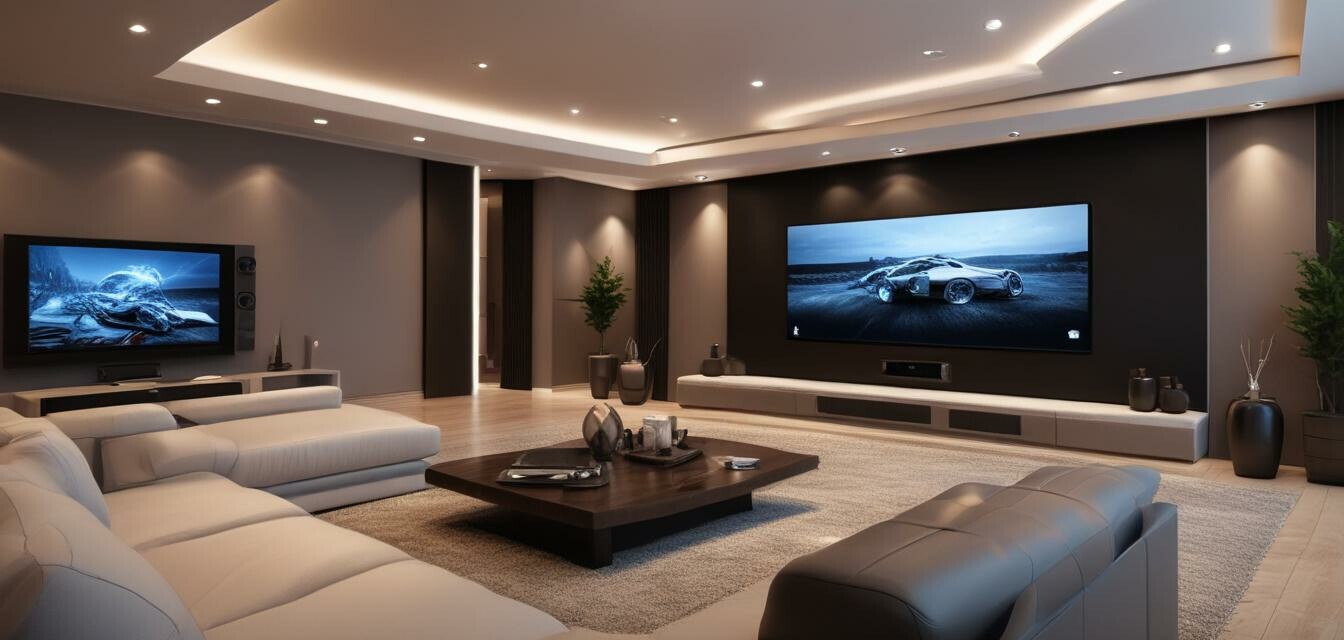
The integration of home automation in theaters
- Home automation enhances the home theater experience by integrating smart devices.
- Various technologies, such as voice assistants and mobile apps, streamline control over systems.
- Advanced systems support seamless integration of entertainment devices for an optimized setup.
- Investing in quality wiring and connectivity solutions is essential for performance.
- Future trends include advancements in AI and machine learning for even smarter setups.
In recent years, home automation technologies have dramatically changed our lives, and their impact on home theaters is no exception. As more homeowners embrace smart solutions, the home theater segment has evolved into sophisticated entertainment hubs, providing unparalleled experiences while maximizing convenience and efficiency. This article explores the rise of home automation technologies that are transforming home theater setups.
The rise of home automation
As technology continues to advance, the concept of home automation has gained popularity in connected homes. It refers to the integration of different devices within a household that allows centralized control, management, and automation of systems. For home theaters, this means users can control lighting, sound, and visual components through a single interface.
Key components of home automation in theaters
There are several components typically involved in integrating home automation into your theater setup:
| Component | Description |
|---|---|
| Smart Speakers | Devices like Amazon Echo or Google Home allow for voice control of your home theater system. |
| Smart TVs | Televisions that integrate streaming apps and connect with other devices in the home network. |
| Remote Controls | Universal remotes that can control multiple devices, simplifying the user experience. |
| Mobile Apps | Applications enabling users to control their home theater systems from a smartphone or tablet. |
| Lighting Control Systems | Solutions that automate and enhance lighting according to the content being viewed. |
Benefits of automation in home theaters
Integrating home automation into your theater setup offers numerous benefits, enhancing the user experience. Below are some key advantages:
- Convenience: Control multiple devices from a single interface.
- Energy Efficiency: Automated systems can reduce energy consumption by adjusting settings based on usage.
- Enhanced Experience: Synchronize audio and visual elements for an immersive experience.
- Customization: Tailor the setup according to personal preferences and requirements.
- Remote Access: Control devices away from home through mobile apps.
Popular automation technologies
Several technologies are becoming increasingly prevalent in home theaters:
- Voice Control: Devices such as Google Assistant and Amazon Alexa allow users to manage their systems using voice commands.
- Smart Lighting: Control lighting remotely or automatically adjust based on viewing preferences.
- Home Theater Receivers: Many modern receivers support home automation protocols, facilitating integration.
- Streaming Devices: Devices like Roku or Apple TV can be automated alongside other components in the home theater.
- Wireless Connectivity: Advances in wireless technology enhance the ease of automation, reducing the need for complex wiring setups.
Setting up an automated home theater
A successful automated home theater requires careful planning and consideration of equipment. Here are some essential steps to follow:
Beginner's tips
- Assess your space: Evaluate the room dimensions and layout before purchasing devices.
- Choose compatible devices: Ensure all components can work together seamlessly.
- Invest in high-quality cables: Good connectivity is crucial for performance.
- Explore DIY options: Many systems allow for easy installation without professional help.
- Seek expert advice when needed: Don’t hesitate to consult with professionals for complex setups.
Future trends in home automation and theaters
As technology evolves, the future of home automation in theaters looks promising. Here are some trends to watch for:
- AI Integration: Future systems may anticipate user preferences and automate settings based on behavior.
- Improved Wireless Standards: Evolving wireless technology will enhance connectivity and reduce latency.
- Interconnected Ecosystems: Entire homes will become connected, providing seamless control over every aspect of daily life.
- Immersive Experiences: Continued advancements in visual and audio technology will raise the bar for home theater enjoyment.
Pros
- Improves convenience and ease of use.
- Creates a more immersive entertainment experience.
- Can save energy and reduce costs long-term.
- Offers potential for future upgrades and integrations.
Cons
- Initial investment may be high.
- Complexity can be daunting for beginners.
- Compatibility issues may arise between different brands.
- Maintenance and updates may be required to keep systems running smoothly.
Conclusion
The integration of home automation in theaters is not just a trend—it's the future of entertainment. With the ability to control numerous devices from a single point, home automation simplifies our home theater experience while enhancing our enjoyment of movies, music, and games. As technology continues to evolve, investing in an automated home theater will become increasingly accessible, making it an exciting prospect for audiophiles and casual viewers alike. For more information and tips on setting up your dream audio experience, visit our Setup Tips section.

